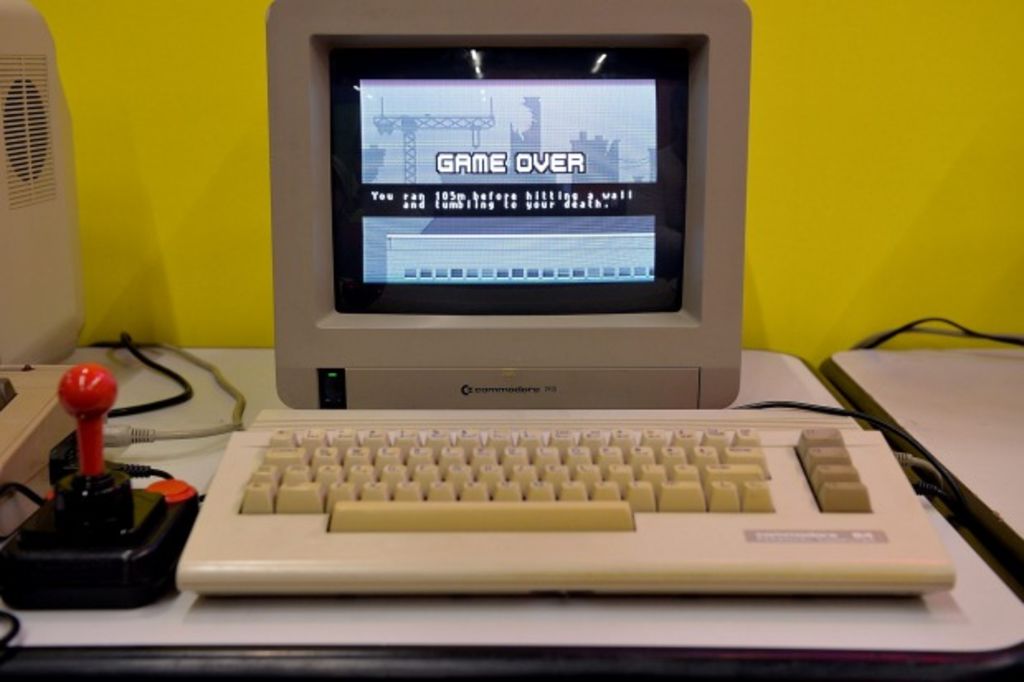10 forgotten wonders of 1980s homes

My children are missing out.
I came to this conclusion the other day as I watched my son drag his sticky one-year-old finger across the television, apparently believing it had a touch screen.
Aside from realising I had largely failed to uphold my commitment to limit my children’s screen time, it occurred to me that this little guy had no idea.
No idea what it’s like to have to get up from a seated position to change channels. No idea what the electro-screech of a dot-matrix printer sounds like. No idea about the wobbly pleasures of eating dinner from a Stable Table (was there ever a household item so misleadingly named?).
In a nutshell, no idea what it’s like to be a child of the ’80s.
So, for the sake of posterity – and in case he ever learns to read despite his early exposure to technology – here is an ode to long-forgotten items from 1980s homes.
Commodore 64 computers
Not merely the greatest-selling computer model of all time, the Commodore 64 was a purveyor of patience. As anyone who ever sat through those long minutes watching the cassette drive load Bruce Lee could attest, it taught users that good things came to those who waited. And waited. Then went to the kitchen for some Space Food Sticks. Then waited some more.
Address books
Before mobile phones came along and invited us to store not only names, addresses and phone numbers but maiden names, prefixes, suffixes and nicknames, there were old-school address books. From professional-looking Rolodexes to pop-up Teledexes and boring A-Z notebooks, address books have been consigned to the wheelie bin of history.

Photo: Getty
Home phones
If you think it takes courage to send someone you fancy that first text or swipe right on their profile, imagine the superhuman bravery it took in the 1980s to phone a girl AT THEIR PARENTS’ HOUSE. Especially if the girl’s dad was a cop. At least that’s what I tell myself when I wonder why I didn’t get many phone calls from boys. My children have never had a home phone, used a rotary dial or become entangled in a telephone cord. They do know how to summon Siri, though.
Answering machines
The idea of waiting until you return home to know whether someone has tried to contact you seems downright prehistoric. Voicemail killed the answering machine and its flashing red light full of promise that the boy you’d met at the school disco had summoned up the courage to call you. Or not. (See above.)
Waterbeds
Who needs to go cruising when you can get seasick in the comfort of your own bedroom? I always thought waterbeds added an element of mystery to sleep, as you wondered whether that wet patch was due to your bladder or the mattress springing a leak. Waterbeds have gone to the big mattress shop in the sky. Right next to the futon section.

Photo: Pinterest
Crimpers
No, that wasn’t the scent of popcorn cooking. That was human hair burning. Maybe some scalp, too. The sleek, non-stick surface of today’s GHDs were not even a twinkle in the eye of 1980s hair weaponry. But how else was a girl to style her hair to complement her stonewash ra-ra skirt and peasant top ensemble?
Ghetto blasters
Canberra, circa 1987: about as far as you could get from a ghetto. Despite that, ghetto blasters (aka boom boxes, radio cassette players) were up there with Walkmans as the most beloved electronic appliances in our house. iTunes seems so dull compared with the physical challenge of lugging the whole chunky device to the TV and hitting record the moment your favourite song came on Video Hits.
Peach leather couches
It didn’t feel like it at the time, but the 1980s was truly the decade that style forgot. In hindsight, there is no excuse for pale peach leather anything, let alone the largest item of furniture in your home. Ditto dusty blue scatter cushions, salmon-pink walls and any shade of vertical blinds.
Photo: eBay
Encyclopaedia Britannica
Back when Pluto was a proper planet and you didn’t need to justify Ken Done prints in your home, there was no greater sign of intelligent life than a full set of Encyclopaedia Britannica on the bookshelf. The World Book series was popular too. Among simpletons.
Videocassette recorders
Before Netflix, before The Pirate Bay – heck, even before DVDs – there were videocassette recorders and their accompanying towering piles of videos. You could judge whether someone was worth befriending by the number of Emilio Estevez movies in their collection, and video hire shop staff could judge you when you hired Flowers in the Attic to see if it was as good as the book. Some people had Beta. You didn’t make friends with them.
We recommend
We thought you might like
States
Capital Cities
Capital Cities - Rentals
Popular Areas
Allhomes
More







